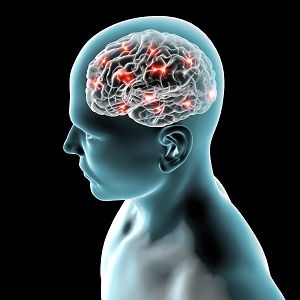Article
Researchers Find Link Between Atrial Fibrillation Medications and Cerebral Microbleeds
Author(s):
A new analysis of nearly 800 patient records has found an association between the oral anticoagulants used to treat atrial fibrillation and cerebral microbleeds.

A new analysis of nearly 800 patient records has found an association between the oral anticoagulants used to treat atrial fibrillation (AF) and cerebral microbleeds.
Researchers in Heidelberg and London pulled 785 patient records from a stroke victim registry. Those records indicated that 186 patients from the sample (23.7%) had experienced at least one cerebral microbleed in conjunction with an ischemic stroke or a transient ischemic attack (TIA).
Cerebral microbleeds occurred in 30.5% of all patients with AF but just 22.4% of the other patients. Patients who took oral anticoagulants to treat AF fared particularly badly: cerebral microbleeds occurred in 36.7% of all such patients but just 22.8% of all other patients (P = 0.03).
Patients who used anticoagulants were also more likely than other patients to suffer 10 or more microbleeds in conjunction with ischemic strokes and TIAs — even after the analysis accounted for patient age.
“Previous [oral anticoagulation] is associated with a higher number of cerebral microbleeds, predominantly in the lobar location,” wrote the authors of the paper, which appears in the European Journal of Neurology. “Establishing a causal relationship requires prospective longitudinal investigation.”
Patients who used anticoagulants were not the only ones who demonstrated a stronger tendency toward cerebral microbleeds. Greater age also proved to be an independent predictor of such events (P = 0.001) among cohort members (mean age 63.9 ± 14.2 years). Analysis of other factors found no significant associations.
Cerebral microbleeds were first detected via magnetic resonance imagining in the 1990s and subsequently found to be relatively common among stroke victims and patients with dementia.
Questions remain about how much damage microbleeds cause, but many studies have found significant associations between microbleeds and adverse outcomes.
Last year, for example, researchers who followed 504 stroke patients with nonvalvular AF for an average of 2.5 years found that that those who suffered 5 or more microbleeds during their initial event were more likely than other patients to die from either subsequent strokes (hazard ratio [HR], 3.39; P=0.007) or all causes (HR, 1.99; P=0.04).
“The diagnosis of cerebral microbleeds is of value in predicting long-term prognosis in stroke patients with NVAF,” the study authors wrote in Neurology.
A research review from 2010, moreover, found another connection between microbleeds and AF medication.
That study pooled data on more than 5,000 patients to show that use of antithrombotic drugs such as warfarin was associated with a greatly increased risk of intracerebral hemorrhage (ICH) among patients with cerebral microbleeds.
The data on patients with documented microbleeds showed that ICH was 2.8 times more common than ischemic stroke or TIA among people who used no medication but 8 times more common among warfarin users (P=0.01).
“The excess of microbleeds in warfarin users with ICH compared to other groups suggests that microbleeds increase the risk of warfarin-associated ICH,” the study authors wrote in Stroke.
The authors of that study recommended further research to determine when (if ever) doctors should protect patients with cerebral microbleeds against ICH by putting them on medications other than warfarin.
The newer study, on the other hand, raises the possibility that warfarin use puts patients at greater risk of developing microbleeds that subsequently put them at greater risk of ICH and death.
Of course, as the authors of the new study noted, further research would be needed to determine whether medication actually causes patients to suffer more microbleeds during stroke or TIA.


